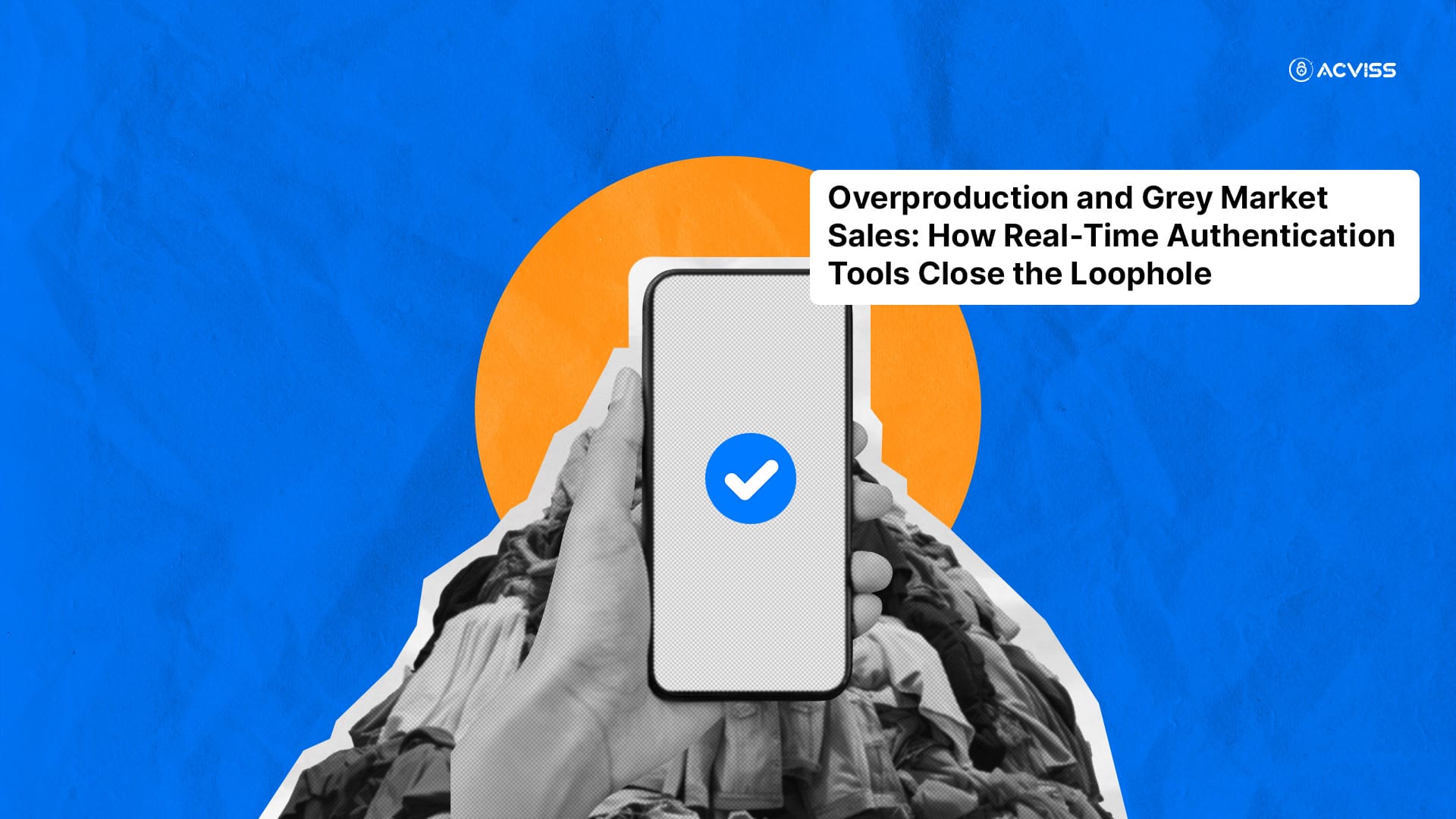Overproduction and Grey Market Sales: How Real-Time Authentication Tools Close the Loophole

The supply chain is a complicated web of agreements, contracts, and responsibilities. For most brand owners, it is a finely tuned system built to deliver efficiency and consistency. Yet, within this system lies a persistent problem that undermines both profitability and brand reputation: overproduction and grey market sales.
These are not new challenges. They have existed for as long as goods have been manufactured and distributed. What has changed, however, is the scale at which they occur and the sophistication with which they operate. Brands across industries, from luxury goods to pharmaceuticals, now face mounting losses not only in revenue but also in customer trust.
Modern technologies in brand protection solutions, particularly real-time product authentication and traceability programmes, are proving to be the key to addressing these loopholes. Let’s take a closer look.
The Root of the Problem: Overproduction
Overproduction occurs when authorised manufacturers produce more goods than stipulated in their contracts with brand owners. At first glance, it may appear harmless. After all, the products are identical to the originals, made in the same factories and using the same materials. Yet, these surplus goods are often sold off the books, entering unauthorised channels where brands lose visibility and control.
The consequences ripple across the ecosystem:
- Revenue dilution: Brands do not earn from these additional units.
- Market distortion: Unsanctioned sales can lead to price imbalances, harming genuine distributors and retailers.
Loss of exclusivity: For premium or luxury goods, exclusivity is a critical part of value creation. Overproduction erodes that perception.
Unchecked, overproduction sets the stage for a thriving grey market.
Grey Market Sales: A Growing Threat

The grey market, also known as the parallel market, consists of goods that are genuine but sold through unauthorised channels. These goods may not always be counterfeit, but their presence in unintended geographies or markets creates several issues:
- Erosion of brand strategy: Products appear in markets where brands have no distribution plans, conflicting with their positioning.
- Warranty and support conflicts: Customers purchasing grey market goods may expect services or warranties that the brand cannot honour.
- Regulatory risks: Certain sectors, such as pharmaceuticals or food, face serious compliance concerns when products bypass regulated supply chains.
The grey market thrives on opacity. As long as there is no reliable way to monitor the movement of goods and their sales, parallel channels remain difficult to control.
Why Traditional Measures Fall Short
Brands have long attempted to tackle overproduction and grey market sales through audits, contractual enforcement, and physical inspections. While these methods remain necessary, they are insufficient on their own.
Audits, for instance, are retrospective. By the time irregularities are uncovered, goods may already be in circulation. Physical inspections are prone to human error and can be circumvented by well-organised networks.
What brands need today is a way to gain real-time visibility into their supply chain and product lifecycle.
Real-Time Authentication: Closing the Loophole

This is where real-time authentication tools and track and trace technologies step in. These systems make it possible for brands to not only verify the authenticity of each product but also monitor its journey from manufacturer to end consumer.
1. Non-Cloneable Label Solutions
Non-cloneable labels are at the forefront of modern anti-counterfeiting technologies. Unlike traditional barcodes or QR codes, which can be copied, these labels embed unique, non-replicable security features that act as a digital fingerprint for each unit produced.
When scanned, these labels provide immediate product authentication and verification against the brand’s database. For overproduction, this means any unauthorised unit can be instantly identified because it will not carry the right credentials.
This technology not only empowers brands but also customers, who can verify products themselves, strengthening trust through brand authentication.
2. Traceability Programmes
A robust product traceability programme gives brands the ability to monitor every stage of the supply chain. From raw materials to final sale, each unit can be tracked, creating a transparent and tamper-proof record.
Such systems allow:
- Detection of diversion into grey markets.
- Identification of overproduction at the source.
- Assurance of compliance with regional and international regulations.
For example, blockchain-based track and trace systems, like Acviss’s Origin, offer immutable records of product movement, enabling brands to close loopholes that opportunistic actors exploit.
3. Product Verification in Real Time
With cloud-based systems and mobile-enabled solutions, verification becomes possible anywhere in the world. Retailers, customs officials, and even consumers can authenticate goods instantly.
Solutions such as Certify make this accessible by providing unique digital certificates embedded in every product, allowing brands to ensure trademark protection and IP protection in the most practical way.
The Wider Benefits for Brands
Deploying these tools does more than just curb overproduction and parallel sales. It also delivers strategic advantages:
- Strengthened trademark and IP protection: Real-time verification makes it far harder for counterfeiters or rogue manufacturers to exploit intellectual property.
- Market intelligence: Brands gain insights into product movement, consumer engagement, and potential leakages.
- Customer trust: When customers can verify authenticity, their confidence in the brand grows, reinforcing loyalty.
- Regulatory compliance: Particularly in pharmaceuticals, agrochemicals, and food, authentication and traceability systems safeguard brands against compliance failures.
Building a Culture of Transparency

The fight against overproduction and grey market sales is not only a technological challenge but also a cultural one. Brands must foster a culture of transparency across their supply chains, aligning with partners and stakeholders who recognise the value of integrity.
Technology provides the tools, but it is the commitment to use them consistently and intelligently that creates lasting impact. By embedding brand protection solutions into supply chain management strategies, companies create an environment where unauthorised production and diversion are no longer viable.
Looking Ahead: The Future of Brand Protection
As supply chains become increasingly global and digital, the risks of overproduction and grey market exploitation will persist. However, the tools available to combat them are evolving rapidly. Anti-counterfeiting solutions and real-time product authentication technologies are no longer optional add-ons but strategic imperatives for any brand serious about protecting its assets.
The integration of non-cloneable labels, blockchain-based track and trace, and digital product verification systems represents the most comprehensive path forward. For brand owners, this means not only safeguarding revenue but also ensuring that their hard-earned reputation remains intact.
Conclusion
Overproduction and grey market sales may appear like small cracks in a brand’s armour, but left unaddressed, they can grow into serious vulnerabilities. Real-time authentication, non-cloneable label solutions, and strong traceability programmes give brands the power to close these loopholes decisively.
At Acviss, our solutions, Origin for track and trace and Certify for digital product authentication, are designed to help brands regain control, protect their intellectual property, and reinforce consumer trust.
Interested to learn more? Get in touch with us today.
